A strong case can be made for all five major forage types used by food plotters today. There are other crops we can sow and wildlife will eat, but we use brassicas, cereal grains, annual legumes, corn and perennial legumes most often. Each has strong suits that can help you attain numerous management goals for various species.
When it comes to picking a single most important forage, each landowner will have different needs and varying opinions. Even if a gamekeeper has a “favorite” food plot forage, the other major groups should still be part of a sound wildlife/land management program. Variety and diversity are important.
Given those caveats and acknowledging that I plant all of the forages listed above on my property, my vote for the single most valuable forage for my situation is clover! In many cases, this should be the core offering for beginning gamekeepers to begin building a varied food plot plan. Obviously there are some regions of the whitetails’ range where perennials simply won’t do well.
For the purpose of this article, we’ll concentrate mostly on perennial white clovers, but annuals and bi-annuals are also terrific and fill an important niche role in enhancing the appeal of other forages such as cereal grains and brassicas when mixed in with them. Red clovers, which can also be annuals, bi-annuals, or perennials depending on where you live, are also excellent choices for a food plot program.
 Reasons to Plant Clovers
Reasons to Plant Clovers
1) Long Growing Season
Clover has one of the longest palatability periods of all forages. Depending on your location, it can be available to your wildlife from 7 to12 months, once established. That tops any other cultivar you can plant for deer.
Where I reside in northwestern Virginia, ladino and intermediate white clovers can grow virtually year-round, though during some cold years in January and February the frozen leaves lie so low and flat on the ground they don’t offer much usable forage. However, during warm years, they are available for virtually 365 days. In the northern most states and Canada, obviously the clovers will go dormant during the winter months. In the Deep South, you might have the opposite effect, and your clovers may go dormant for a period during the hot, dry summer conditions, but then spring back when cooler temperatures and fall rains return.
With this long period of availability, clover can form the backbone of a food plot program and then you can build around it with various annuals such as brassicas, cereal grains and warm season annuals to offer a complete and varied buffet. No one would suggest planting clover exclusively, but its long period of availability makes it extremely valuable for holding whitetails on a property. It’s always or almost always there for the deer.
2) Palatability or “Taste Appeal”
Only a deer could really answer this question and rate clover for “taste appeal.” However, from what I’ve seen in my Non-Typical and Clover Plus plots, whitetails are inordinately fond of the small tender green leaves. I’ve seen them eat clover every month of the year, even when thriving warm season annuals and brassicas are available.
A good way to prove deer like its taste is to plant two plots with a cereal grain such as wheat, oats, or triticale – one by itself, one with ladino, crimson, berseem, or arrowleaf mixed in. Watch which one gets the most pressure. In my tests, the “blends” always get hammered harder than the plain cereal grains. Mossy Oak experts are aware of that and include clovers in many of their seed blends such as Winter Grass Plus and Outfitter’s Blend for added taste appeal.
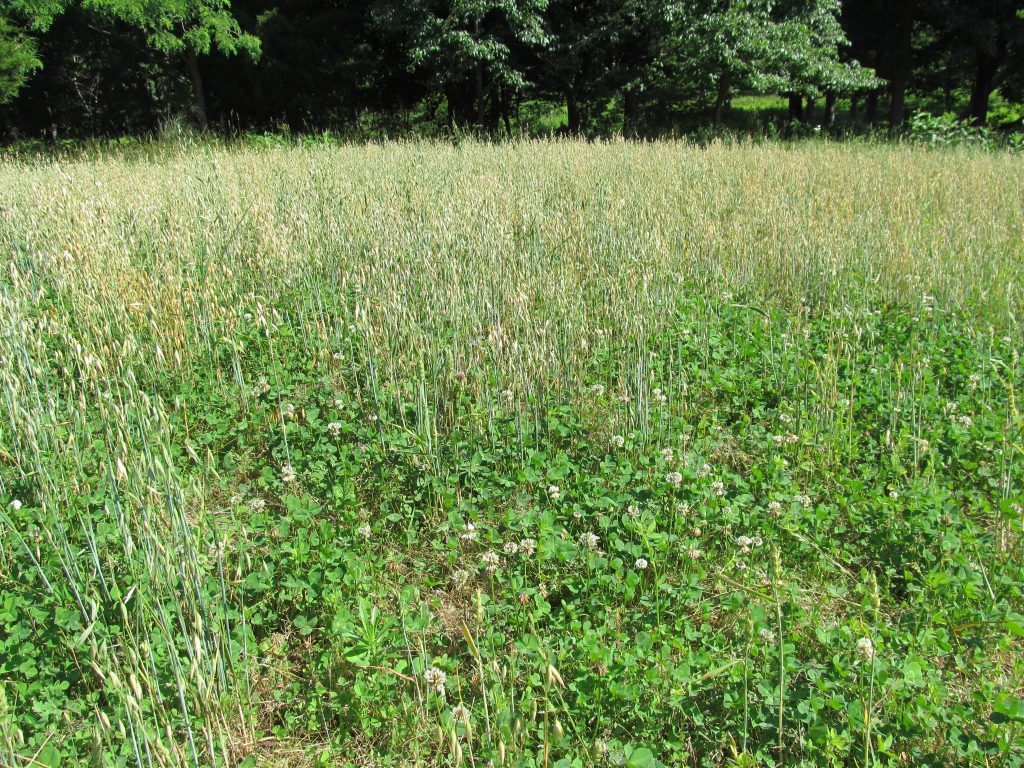
3) High Nutrition Content and Digestibility
Clover proteins range from the teens for some annuals into the 30s for whites. This is exactly what bucks that are growing antlers and does nursing fawns need from spring through summer. Clover is also high in minerals and vitamins. The types targeted for deer forage, such as those in Clover Plus and Non-Typical, are low in lignin. Lignin is a material which makes a plant stand erect, which is fine for bovine consumption and helps if you’re baling the stand, but not for feeding whitetails. This is what makes stems tall and stiff for harvesting for hay. Clovers used for deer have thinner, shorter stems, but more leaf matter and less lignin.
The tender leaves are the part deer really want, so the less stem the better. Clover is also highly digestible in the small rumens deer have with TDN (Total Digestible Nutrient) levels around 70-80 percent.
4) Inexpensive to Grow
This may be a “head-scratcher” at first, but when you think about it, the reasoning is clear. Clover seeds are expensive, but they are so small that a bag goes a long way and the plant’s long life of 3-5 years or more means you only have seed cost once every few years instead of every year like annuals. Clover also produces its own nitrogen, so there’s less fertilizer expense with only a minimal amount of nitrogen, if any required at planting. It can also leave some of its nitrogen in the soil for future rotated plantings – especially nitrogen loving crops like brassicas and corn. If you count your labor, time, and wear on equipment, costs become even cheaper since you get multiple years out of a single planting.
5) It Spreads Naturally
One of the most impressive traits of clover is the way it spreads, thickening and expanding through stolon growth once established. If you have a few small bare spots after you plant a clover field, don’t worry. Chances are, nearby clover plants will extend their roots, kind of like “The Blob,” for old-timers who know that movie. The aboveground plant stems create runners – root shoots that spread horizontally and then take hold in the ground, creating new “daughter plants.” The new plants fill in open areas, thickening the plot, and preventing weeds from taking over those “vacancies” where ground is visible. A clover field usually looks even better in its second, third and fourth year because of this naturally expanding ability—if you keep weeds and grasses controlled. In addition to spreading by stolon production, it also expands when allowed to flower and produce seeds.
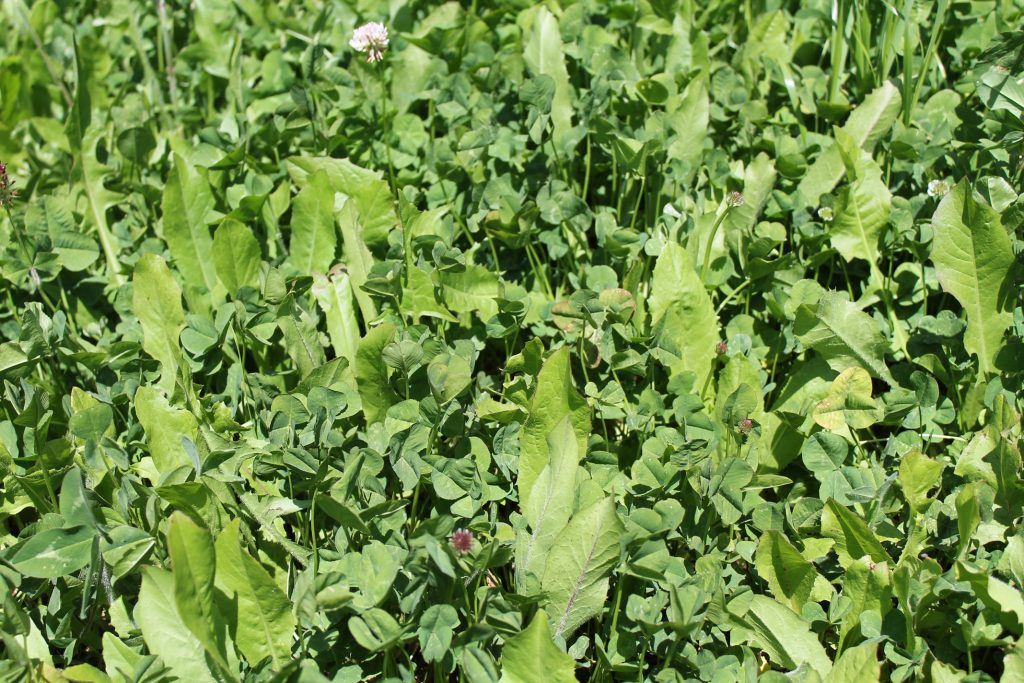
6) It will grow in Most Soils
It’s true, most white clovers do best in clay, loam or bottomland type soils. However, if you put in the effort to get the pH into the 6.5 to 7.0 range, you can grow it just about anywhere that gets at least 5-6 hours of sunlight per day and average rainfall. Annuals and some New Zealand reds used in Clover Plus are especially tolerant of lower-quality soils. Crimson can even grow in soils with a pH below 6.0. A good policy is to use a blend like Clover Plus, or annuals for marginal soils, and save your best bottomland sites for high quality ladinos like Non-Typical.
With that said, I’ve planted ladinos on some very mediocre dirt and had surprisingly good growth and use by deer. What I’ve found from 30 years of growing clover is that timely rains are just about as important as soil quality. If you can get even a little rain every three or four days or a good rain once a week, clover will do fantastic even on mediocre dirt.
7) It’s a Favorite “Doe Hub” during the Rut
This isn’t a land-management reason for growing clover, but for hunters it’s a huge plus. Does love clover and quite often “hubs of rut activity” develop around these plots in November. That’s especially true if you have some smaller clover plots in lightly-pressured, isolated areas. I have a number of clover plots that see almost exclusively doe use during summer and early fall. Come November, it’s a different ballgame.
When the rut arrives a buck’s main drive is to locate does in estrous. The first does to cycle are usually the older ones, and they often claim the best clover plots. Bucks are drawn to these “mature doe hangouts” like bees to honey. If there’s cover nearby, they can weave in and out of and push the doe into to breed her, you have a perfect ambush spot. The edge of thick brush bordering a clover plot is about as close as you can get to the perfect all-day stand location in the heart of the breeding season.
8) It doesn’t need Protection Once Established (usually)
If you have much experience with trying to grow soybeans, lablab, or cowpeas, you know these forages can be obliterated almost overnight if the deer population is high. This is especially true if you don’t have a lot of land and can’t plant five acres or more in a plot. Of course, there are ways to deter this feeding – electric fences, double fences, netting, ribbons treated with and P2 Plot Protector. With clover, you shouldn’t need to limit early foraging unless you have extremely high pressure. Perennial clovers need some time to establish their root system so they will return after dormancy, but after this point, deer can eat all they want and it just keeps coming back strong. In fact, if they hammer the plot enough you may not even have to mow it unless competition moves in. They’ll often keep it from going into the flowering stage and stimulate it to constantly grow more fresh tender leaves with higher nutrient content
9) Weeds and Grasses can be Easily Controlled
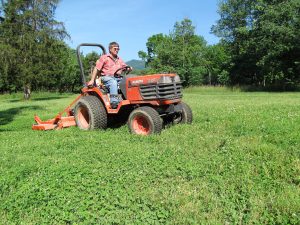 If your deer herd isn’t quite as heavy as described above, the clover can be kept in its prime growth stage by strategic mowing. How much you should mow depends upon the time of the growing season and conditions. During cooler weather with ample moisture (spring and fall), white clovers can be mowed short – just be sure to leave some leaves on the plants. This actually stimulates stolon production. During summer or if the plants are stressed, mow when blossoms start to become abundant and weeds and grasses grow higher than the clover. Just clip off the flowers and weed seed heads, but not too much of the clover. This revitalizes the forage and encourages new fresh growth.
If your deer herd isn’t quite as heavy as described above, the clover can be kept in its prime growth stage by strategic mowing. How much you should mow depends upon the time of the growing season and conditions. During cooler weather with ample moisture (spring and fall), white clovers can be mowed short – just be sure to leave some leaves on the plants. This actually stimulates stolon production. During summer or if the plants are stressed, mow when blossoms start to become abundant and weeds and grasses grow higher than the clover. Just clip off the flowers and weed seed heads, but not too much of the clover. This revitalizes the forage and encourages new fresh growth.
If grasses are a problem, selective herbicides such as Clethodim, Sethoxydim can be sprayed to control them without damaging the clover. Try to eradicate them early before they become tall and harder to kill. Broadleaf weeds can be controlled with Butyrac 200, 2-4-DB.
10) It’s easy to establish
If you start with a well-prepared seedbed and fertilized ground with a pH of 6.5 or higher, clover is simple to grow. Most seeds these days come inoculated so you don’t even have that step which us old-timers had to deal with. The main two culprits that can hurt a clover plot are weeds and acidic soil. These two are somewhat interrelated since weeds thrive in low pH soil. Fix the pH with lime and use the methods outlined in #9 to control unwanted vegetation such as weeds and grasses.
Do those things and follow the planting steps outlined in the sidebar, and you’ll have a good clover plot, maybe even a great one. I’ve never had a planted clover plot not come up.
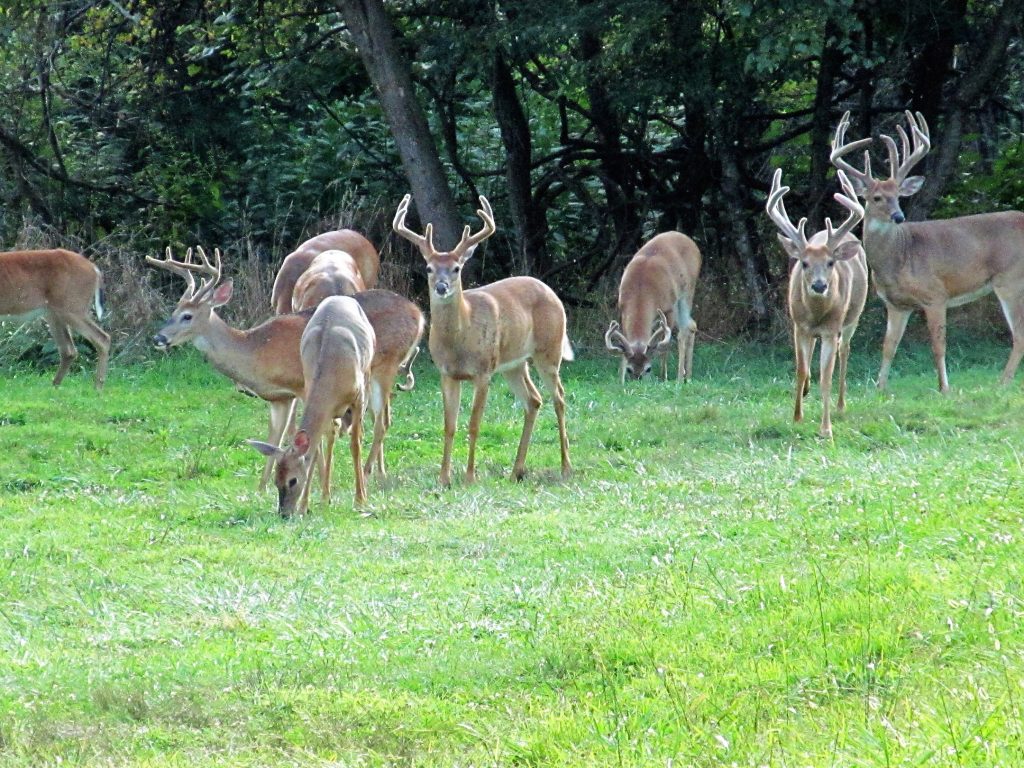
Annuals are great if you have the time to prepare the soil and plant each year. If you’re busy and time for food plotting is hard to come by, having more perennials like clover may be the answer. Other than mowing and spraying for grass and weed competition and maybe adding 0-46-0 and 0-0-60 or similar when needed, little is required to grow a plot that continues to produce quality, high protein forage that deer can use in some regions up to 365 days a year.

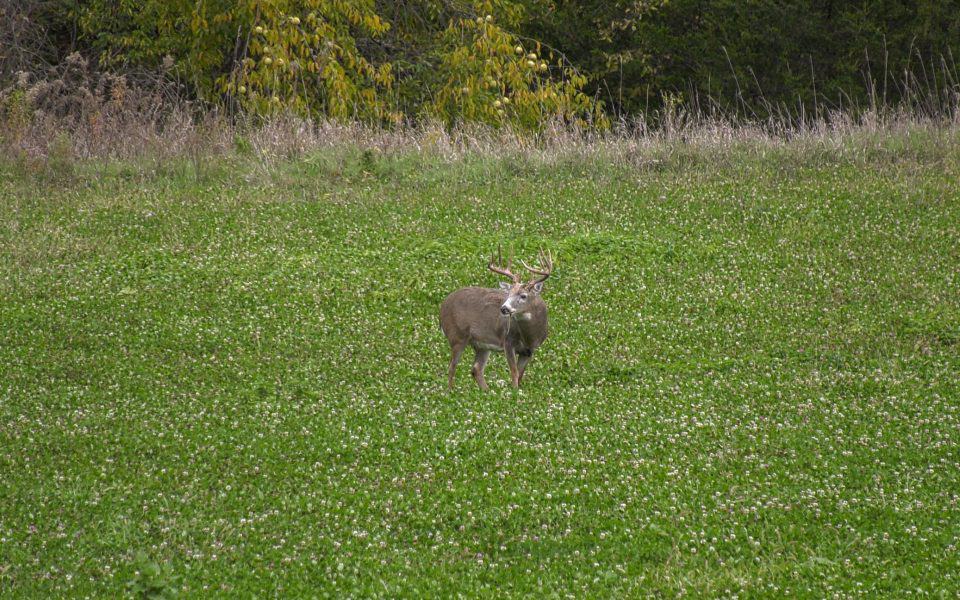
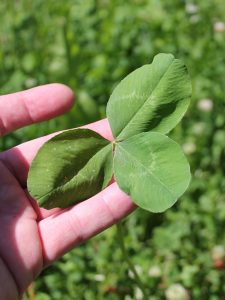 Reasons to Plant Clovers
Reasons to Plant Clovers





